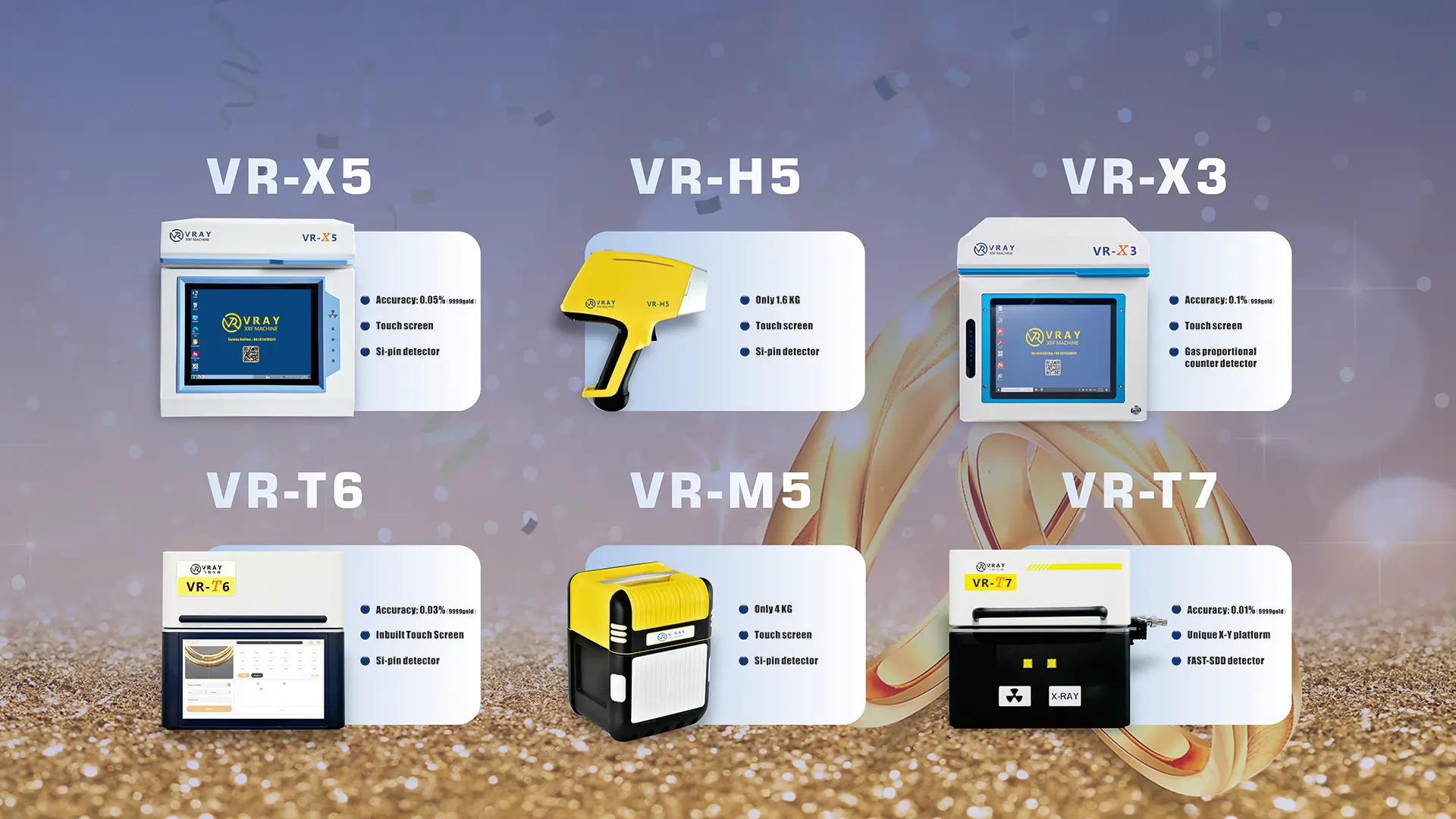¿Cuál es la diferencia entre XRF y el ensayo de fuego??
When it comes to determining the purity of oro y otros metales preciosos, two methods dominate the industry: Fluorescencia de rayos X (XRF) analysis and fire assay. Both are trusted by professionals worldwide, but they differ significantly in accuracy, velocidad, convenience, y practicidad. At their foundation, the two methods approach testing in opposite ways:

- XRF (Fluorescencia de rayos X): A non-destructive technology that uses X-rays to excite atoms in a sample, instantly reading the emitted signals to determine its composition. It gives results within seconds or minutes without damaging the item.
- Ensayo de fuego: A traditional destructive process that melts down the metal at high temperatures, separating the precious metal content from impurities. This method has been used for centuries and is often regarded as the historical “gold standard” for ultimate accuracy.
The key distinction: XRF is fast, convenient, y no destructivo, while fire assay is slower, labor-intensive, and permanently alters the sample.
Velocidad y eficiencia
For businesses where time equals money, speed is critical.
- Analizador XRFs deliver results in less than a minute, often with just the push of a button. Jewelry stores can confirm purity for a customer in real time, and recycling centers can process dozens of items per hour.
- Ensayo de fuego, by contrast, requires melting, flux preparation, cupellation, and cooling—a process that can take several hours or even an entire day. This makes it impractical for retail environments or businesses that handle large daily volumes.
In today’s fast-paced market, most users value the efficiency of XRF for routine testing and customer-facing services.
Exactitud y precisión
Accuracy often defines trust in precious metal testing.
- Ensayo de fuego is generally acknowledged as the most precise method, with results often accurate to 001% or better. It is ideal for refineries and official institutions that require absolute certainty.
- XRF, while slightly less precise, still provides extremely reliable results—typically within 1%–0.3% accuracy depending on the analyzer’s detector. For most commercial applications, this level of accuracy is more than sufficient.
In practice, many companies use XRF as the first-line test and reserve fire assay for disputes or final verification of very high-purity gold.
Consideraciones de costos
Both methods involve different types of investment.
- Analizadores XRF are a one-time equipment investment. While the upfront cost may seem significant, ongoing expenses are minimal. No consumables, melting equipment, or high energy usage is required. Con el tiempo, this makes XRF highly cost-effective.
- Ensayo de fuego, Por otro lado, involves repeated costs: crucibles, chemicals, furnaces, high energy consumption, and labor. It also requires skilled operators, increasing long-term operational expenses.
For jewelry shops, pawn businesses, and recycling facilities, XRF offers the best balance of affordability and return on investment.
Practical Usability
Different industries have different needs.
- Analizadores XRF are portable, user-friendly, and versatile. Dispositivos como Vray's VR-M5 Portable Analyzer o VR-H5 De mano Analizador allow staff to test items on the spot—even at trade shows, customer homes, or mobile recycling units. The non-destructive nature ensures customers trust that their jewelry won’t be damaged.
- Ensayo de fuego, sin embargo, is impractical outside specialized laboratories. The process requires furnaces reaching over 1,000°C, proper ventilation, chemical handling, and significant training. This makes it suitable only for large refineries or certified assay offices.
For day-to-day commercial use, XRF is far more accessible and safe.
Environmental and Safety Aspects
- Analizadores XRF are safe to operate thanks to built-in radiation protection, safety interlocks, and automated shielding. Modern devices, como Vray’s VR-X3 y VR-X5 analizadores, feature advanced protection systems that ensure both users and customers are safeguarded.
- Ensayo de fuego involves open flames, toxic lead oxides, and high-temperature operations. The environmental impact is significant, and strict compliance with safety regulations is required.
From both an environmental and workplace safety perspective, XRF analyzers clearly have the advantage.
Although fire assaying remains irreplaceable in terms of extreme precision, for most jewelry retailers, Casas de empeño, recycling and refining companies, XRF offers the best balance of efficiency and accuracy.
Vray Instruments: Reliable XRF Solutions for Every Need

VRAY Instruments has developed a complete lineup of advanced XRF analyzers designed to meet diverse testing requirements:
- VR-M5 Analizador XRF portátil: Ligero, 8-hour battery, built-in radiation protection, and HD camera—perfect for mobile services and recycling businesses.
- VR-H5 Handheld Analyzer: Compact and rugged, offering fast on-site testing for mining grade analysis and mobile gold recycling.
- VR-X3 Analyzer: Ordenador industrial incorporado, advanced protection systems, and precision suitable for jewelry stores and refineries.
- VR-T9 High-Precision Analyzer: Accuracy down to ±0.001%, ideal for high-purity gold verification and quality control.
- VR-S6 Benchtop Espectrómetro: Sleek design with full elemental range, ± 0.03% de precisión, and all-in-one build for laboratories and institutions.
No matter the scale of your business, VRAY offers a solution that combines velocidad, seguridad, and precision to support your testing needs.
Pensamientos finales
The difference between XRF and fire assay lies in how they balance speed and accuracy. Fire assay remains the ultimate reference for precision, but XRF analyzers have become the practical choice for most modern businesses due to their speed, non-destructive nature, and cost efficiency. For companies looking to stay competitive while delivering reliable results, investing in advanced XRF technology is the clear path forward.
Preguntas frecuentes
Q1:Is fire assay more accurate than XRF?
A1:Sí. Fire assay is considered the most accurate method, but XRF provides results that are reliable enough for most commercial and industrial uses.
Q2:Can XRF completely replace fire assay?
A2:Not in every case. For ultra-pure gold or official certification, fire assay may still be required. Sin embargo, XRF is the preferred choice for routine testing and business operations.
Q3:Will XRF analyzers damage jewelry or samples?
A3:No. XRF testing is entirely non-destructive, making it safe for jewelry, Monedas, and other valuable items.
Q4:How much does an XRF analyzer cost compared to fire assay setup?
A4:An XRF analyzer involves an upfront cost but minimal ongoing expenses. Fire assay requires continuous investment in consumables, labor, and energy.

WhatsApp
Escanea el código QR para iniciar un chat de WhatsApp con nosotros.